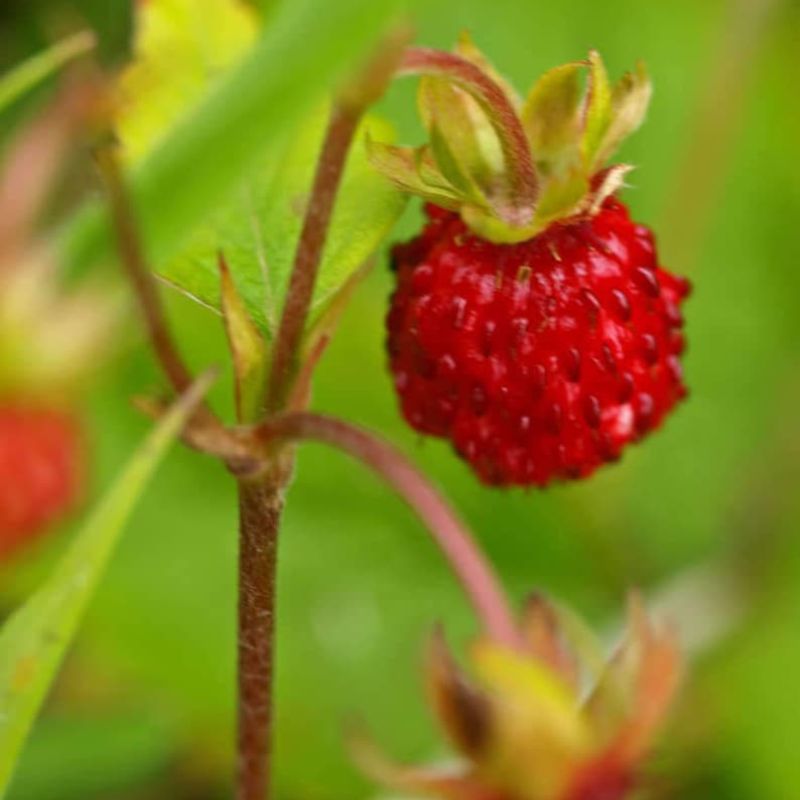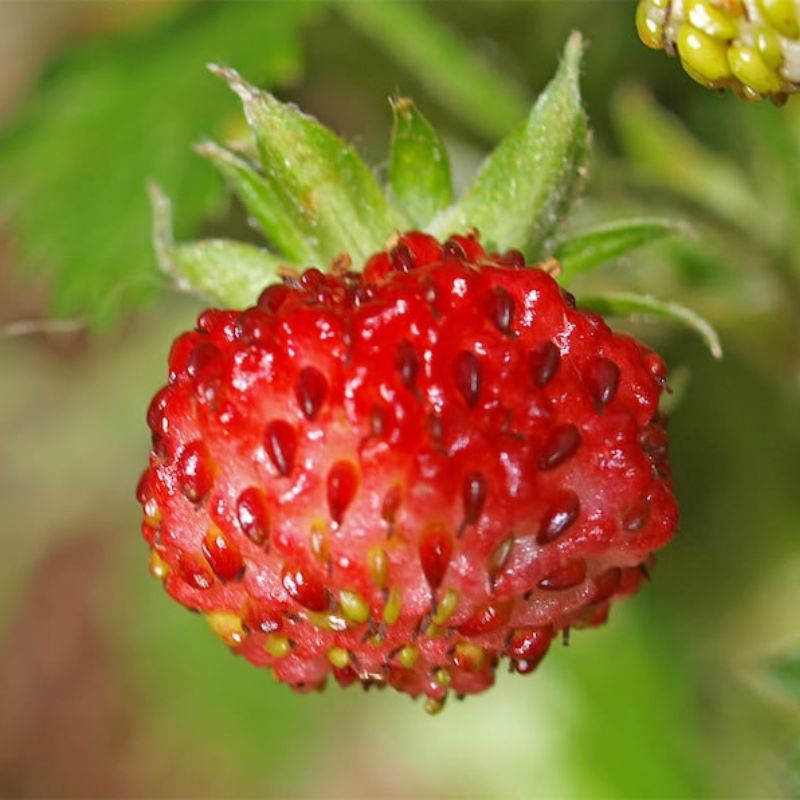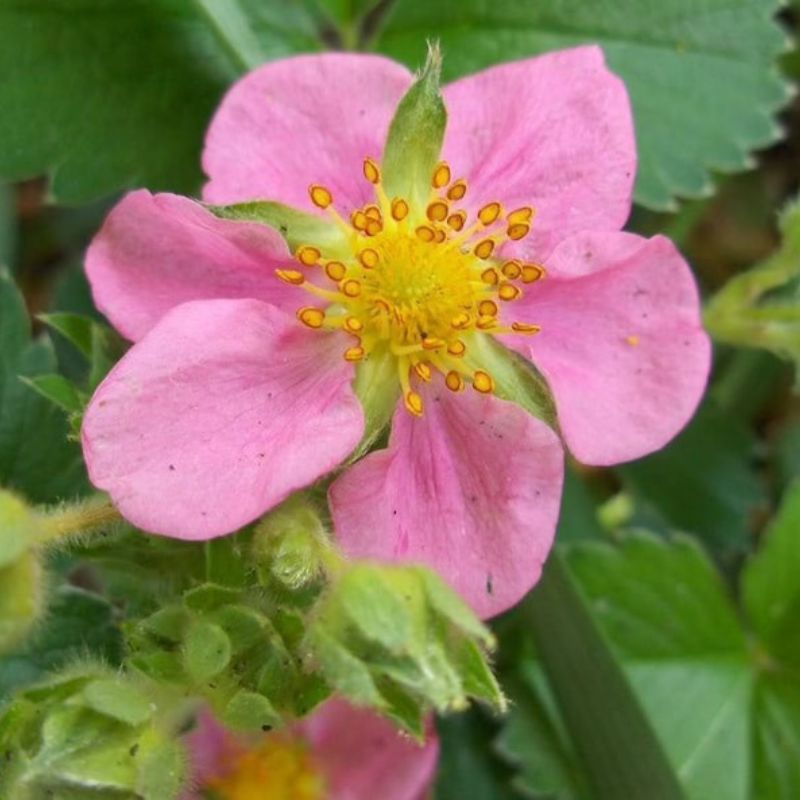- Historical context: Fragaria vesca, commonly known as wild strawberry or woodland strawberry, has been enjoyed by humans for thousands of years. The 'Baron Solemacher' variety is a cultivated form of the wild strawberry, developed for its improved fruiting characteristics.
- Geographical origination: The wild strawberry is native to Europe, Asia, and North America. The 'Baron Solemacher' variety was developed in Germany.
- Relevant cultural significance: Wild strawberries have been a part of human diet and culture for centuries, often celebrated in folklore and traditional medicine.
- Time period of discovery: The 'Baron Solemacher' variety was developed in the early 20th century.
- Original habitat: Wild strawberries typically grow in woodland edges, meadows, and other semi-shaded areas with rich, well-drained soil.
- Notable historical uses: Wild strawberries have been used for their sweet fruits, medicinal properties, and as a symbol in various cultural traditions.
- Ideal temperature range: Wild strawberries thrive in temperatures between 60-80°F (15-27°C).
- Soil type: They prefer well-drained, loamy soil with a pH between 5.5 and 6.5.
- Sunlight requirements: Full sun to partial shade. They can tolerate some shade but produce more fruit in full sun.
- Watering needs: Regular watering is essential, especially during dry periods. The soil should be kept consistently moist but not waterlogged.
- Planting season: Spring or early fall is the best time to plant wild strawberry seeds.
- Germination time: Seeds typically germinate in 2-4 weeks under optimal conditions.
- Growth cycle duration: Wild strawberries are perennial plants, meaning they will come back year after year.
- Common pests and diseases: Common pests include aphids, slugs, and spider mites. Diseases can include powdery mildew, leaf spot, and root rot.
- Companion planting advice: Good companions include spinach, beans, and lettuce. Avoid planting near cabbage or other brassicas.
- Common challenges and solutions: Challenges include managing pests and diseases, ensuring adequate water, and preventing overcrowding. Solutions include regular monitoring, using organic pest control methods, and proper spacing.
- Nutritional values: Wild strawberries are rich in vitamins C and K, fiber, and antioxidants.
- Health benefits: They can help boost the immune system, improve heart health, and provide anti-inflammatory benefits.
- Culinary uses: Wild strawberries can be eaten fresh, used in desserts, jams, and jellies, or added to salads and beverages.
- Medicinal uses: Traditionally, wild strawberries have been used to treat digestive issues, skin conditions, and as a diuretic.
- Other unique advantages: The 'Baron Solemacher' variety is known for its continuous fruiting throughout the growing season, making it a popular choice for home gardeners.












